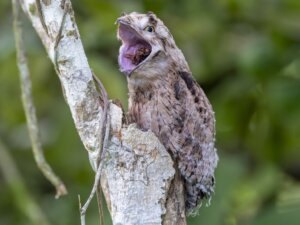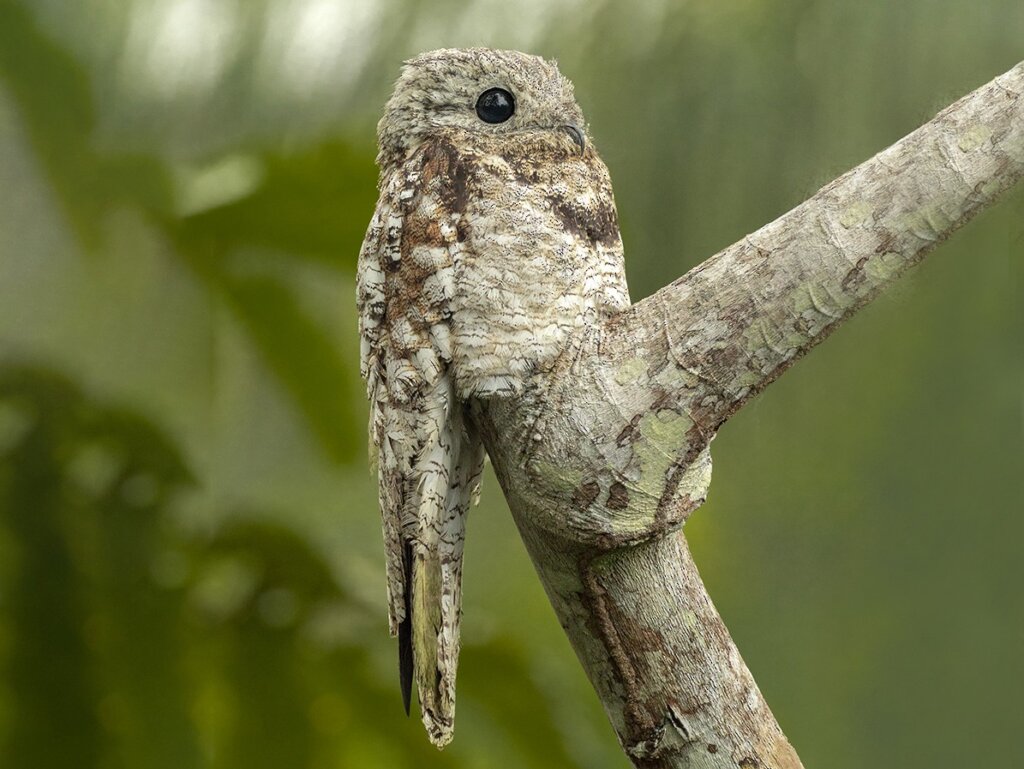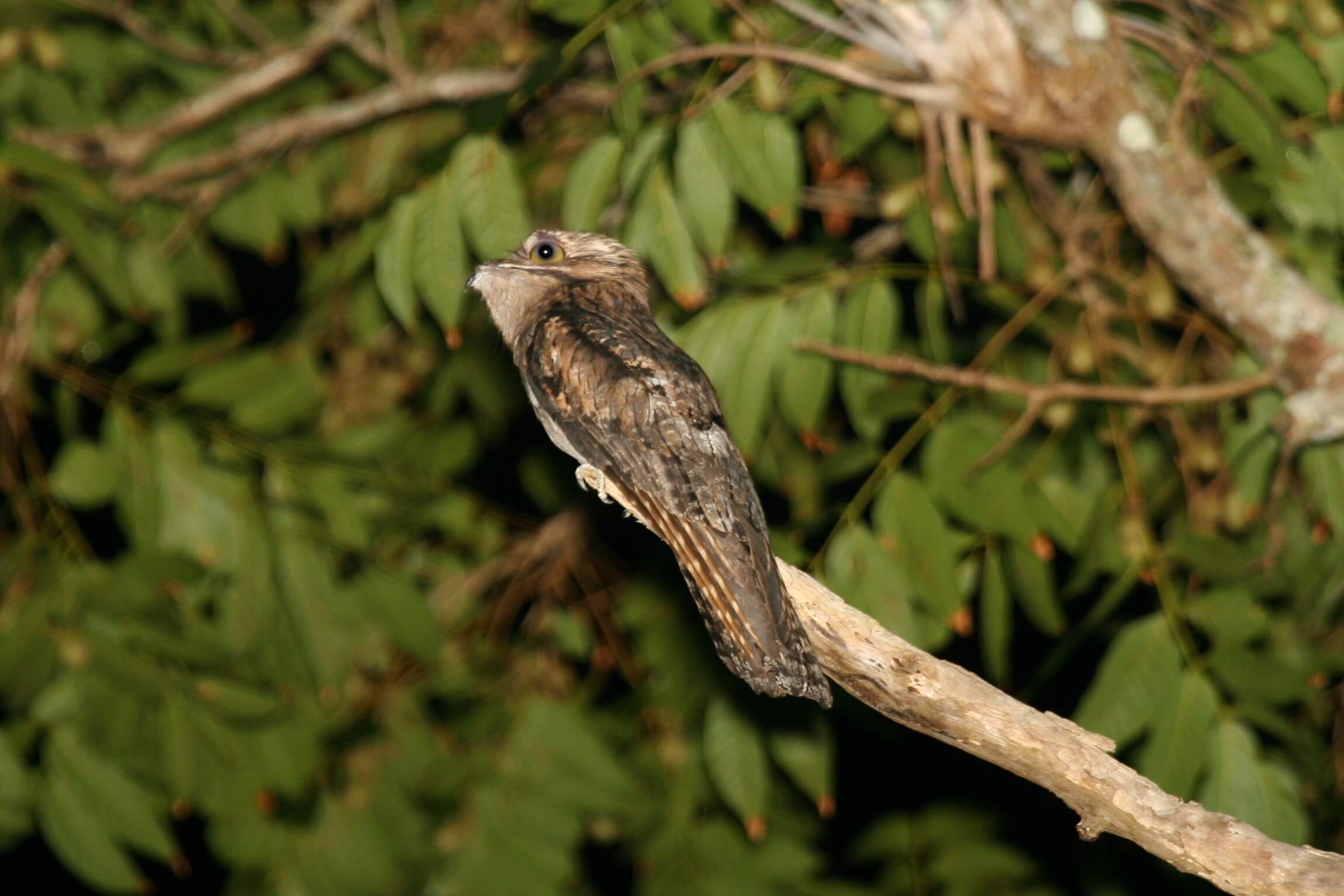5 Curiosities About the Common Potoo

The common potoo or Nyctybius griseus is a nocturnal bird belonging to the Nyctibiidae family, which includes a total of two genera and seven animal species. It’s distributed in different territories of Central and South America. It’s located from southeastern Mexico to northern Argentina and southern Paraguay.
Curious aspects of the common potoo
It’s popularly known by different names according to the place where it’s found, and receives names such as witch bird and ghost bird. Continue reading to discover 5 amazing and interesting aspects about this fascinating, but somewhat disconcerting bird.
1. The common potoo is an expert in camouflage
With an average size of 40 to 50 centimeters (16 to 20 inches) and a weight of 250 grams (8.8 oz), the common potoo is a bird relatively vulnerable to predators.
However, the evolutionary process has given it the ability to blend in perfectly with its environment. Thanks to the pale gray and black tones of its plumage, this bird can perch on tree trunks and go completely unnoticed.
Similarly, in the presence of any threat, the common potoo has the ability to remain completely immobile with its eyes and mouth closed, pretending to be an extension of the trunk where it’s perching.
Due to this characteristic – known as cryptic coloration – it’s difficult to observe in the wild.

2. It has highly developed eyes
As described above, the common potoo has a preference for hunting at night. It feeds mainly on grasshoppers, crickets, and beetles, which it catches by flying silently to the place where they’re found.
For this reason, this bird has large yellow eyes that give it great vision in the dark. In fact, its vision is among the best in the animal kingdom. In addition, the potoo has small slits in its eyelids, which help it to perceive any movement, even when its eyes are completely closed.
3. Unlike other birds, the common potoo doesn’t build nests
One of the most notable reproductive behaviors in birds is the building of nests for egg-laying. However, this isn’t the case with the common potoo.
In contrast to the rest of its species, the “ghost bird” chooses to lay its eggs in the cracks or crevices of trunks at a height of approximately 10 meters (about 33 feet).
Although you may think this is a risky strategy, the potoo secures the egg in such a way that it can’t fall due to the tree’s movement in any way. Likewise, both the males and females are very dedicated to the care of their young. While one is in search of food, the other will be incubating it.
Among other things, the common potoo is a monogamous bird, which means they keep only one partner throughout their lives. In addition, the reproduction of the species is a bit slow, as the female can only lay one egg during laying. The incubation period lasts about 2 months. Once the chick hatches, it’s cared for and fed by its parents during the first weeks of its life.
4. There are numerous legends because of its song
In addition to its mysterious and disturbing appearance, the potoo is recognized in the popular culture of many Latin American countries for its particular song. The sounds emitted by this bird are similar to those of a lament. This has given rise to numerous myths and legends about this strange animal species.
One of these stories, originating in Peru, tells that during an epidemic that was wiping out the population of a native community, the mother of two children took her children into the forest to save them from the disease.
When they were left alone there, the children began to play and eat the fruits they found there. However, once nightfall came, the little ones began to search for their mother, getting lost and trapped in the deep and thick tropical jungle.
The story tells that the spirit of the jungle felt sorry for the children and turned them into birds so that they could go in search of their mother. However, when they reached their home village, all the people had died.
For this reason, the legend says that these birds fly and fly in search of their mother, and when they land on a tree, they have their particular pitiful song that Peruvian people say sounds like ayaymamá (a lament of woe towards their mother).

5. The potoo is an excellent biological controller
According to numerous studies, the potoo can be considered a good pest controller of coleoptera and lepidoptera.
According to data from this research, in which the feeding behavior of a group of common potoos was monitored, it was calculated that a single pair can capture a minimum of 675 insects per month and 8100 per year. Such figures confirm its role as an efficient pest controller in urban and rural areas.
All cited sources were thoroughly reviewed by our team to ensure their quality, reliability, currency, and validity. The bibliography of this article was considered reliable and of academic or scientific accuracy.
- Richard E, Contreras Zapata D, Aguilar P, Delgado Villafuerte C, Ortiz A. Alimentación de Nyctibius griseus en un área urbana y su potencial como controlador biológico, Calceta, Ecuador. 2019. p. 590-6.
- Ordano M, Miatello R. Nyctibius Griseus (Aves: Nyctibiidae): Nueva Especie para la Avifauna de Córdoba, Argentina. Natura Neotropicalis. 2001;32:71-2.
- Nieto LM, Kretschmer R, Ledesma MA, Garnero Adel V, Gunski RJ. Karyotype morphology suggests that the Nyctibius griseus (Gmelin, 1789) carries an ancestral ZW-chromosome pair to the order Caprimulgiformes (Aves). Comparative cytogenetics. 2012;6(4):379-87.
- Holyoak D. Nightjars and their allies, The Caprimulgiformes2001.
This text is provided for informational purposes only and does not replace consultation with a professional. If in doubt, consult your specialist.